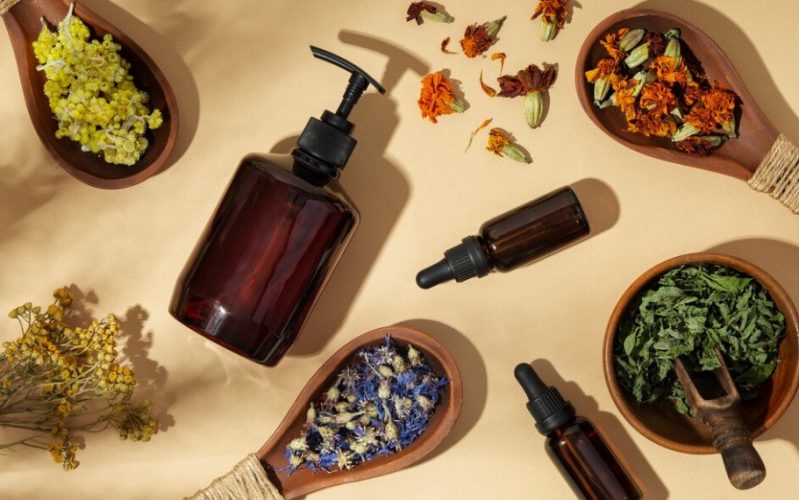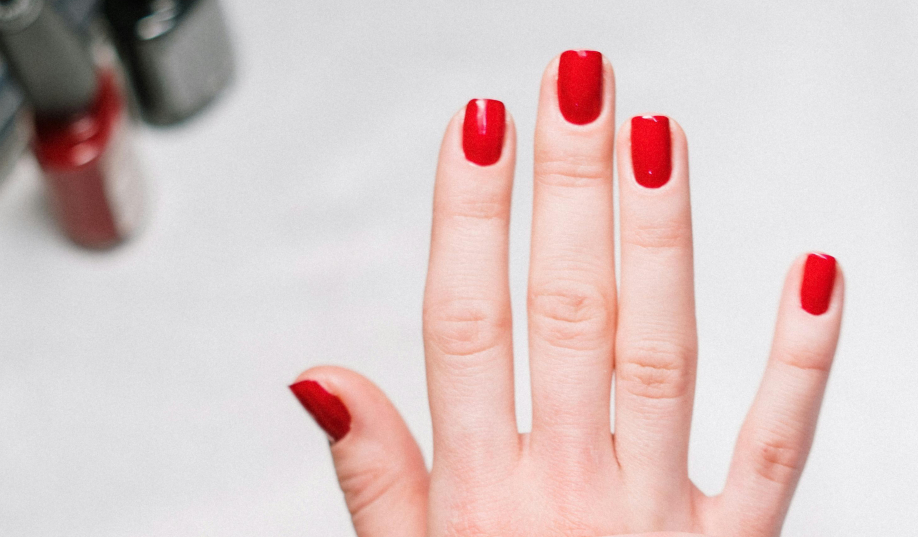Essential Oils Do’s and Dont’s: Everything You Need to Know

© Freepik
Are you intrigued by the world of essential oils but unsure how to use them effectively? With their growing popularity, it is important to understand the dos and don’ts to maximize their benefits and avoid potential pitfalls.
Essential oils have been used for centuries for their therapeutic properties, but not all information available about them is accurate. With so many oils and conflicting advice out there, it is easy to become overwhelmed and make mistakes that could impact your well-being. From proper dilution techniques to safe application methods, navigating the world of essential oils requires knowledge and caution. This is everything you need to know.
What Are Essential Oils?
Essential oils are derived from various plant parts like leaves, seeds, barks, roots, and rinds, concentrated using different methods. They can be added to oils, creams, or bath products, or used by inhaling, applying topically, or adding to baths. Research suggests they can be beneficial when used correctly. Always check labels and consult a doctor if unsure about their suitability for use.

History of Essential Oils
The history of essential oils dates back thousands of years and spans various cultures around the world. Some key aspects include:
- Ancient Civilizations: Essential oils have been used since ancient times in Egypt, China, India, Greece, and Rome for their medicinal, aromatic, and ritualistic purposes. Egyptians used essential oils in embalming practices and for perfumes. In India, Ayurvedic medicine incorporates aromatic oils for healing.
- Middle Ages: During the Middle Ages, essential oils continued to be valued in Europe, primarily for their medicinal properties. The practice of distillation, which is essential for extracting essential oils, became more refined during this period.
- Renaissance and Early Modern Era: In the Renaissance, the use of essential oils expanded as botanical studies and medicinal practices evolved. The renowned physician Paracelsus promoted the use of essential oils for treating various ailments.
- 18th and 19th Centuries: The popularity of essential oils grew during the 18th and 19th centuries with advancements in chemistry and medicine. Aromatherapy, as a holistic healing practice, gained attention in France during the 19th century, particularly through the work of René-Maurice Gattefossé.
- 20th Century: In the early 20th century, essential oils continued to be used for their therapeutic benefits, particularly in alternative medicine practices. The term “aromatherapy” was coined by René-Maurice Gattefossé in 1937, referring to the use of essential oils for healing purposes.
- Modern Day: Today, essential oils are widely used in aromatherapy, massage therapy, skin care, and alternative medicine. They are valued not only for their aromatic qualities but also for their potential therapeutic effects, which are supported by ongoing scientific research.
How to Use
Here are various ways to enjoy essential oils:
- Spritz a mixture of water and essential oil on your pillow and sheets.
- Place a few drops on a cotton ball and place it in your car’s air vents.
- Add a few drops to your bath water.
- Apply oil directly to pulse points.
- Inhale directly from the bottle.
- Use an oil diffuser or vaporizer.
- Wear jewelry designed for diffusing essential oils.

Well-Known Essential Oils
There are over 90 types of essential oils, each with unique aromas and potential health benefits. Here are 10 popular ones:
- Peppermint: boosts energy and aids digestion
- Lavender: relieves stress
- Sandalwood: calms nerves and enhances focus
- Bergamot: reduces stress and improves skin conditions
- Rose: enhances mood and reduces anxiety
- Chamomile: improves mood and promotes relaxation
- Ylang-Ylang: treats headaches, nausea, and skin conditions
- Tea Tree: fights infections and boosts immunity
- Jasmine: aids with depression, childbirth, and libido
- Lemon: aids digestion, improves mood, and relieves headaches
What Are Carrier Oils?
Essential oils are derived from aromatic parts of plants through the distillation of leaves, flowers, bark, and roots. Direct application to the skin can lead to reactions like severe irritation, flushing, or burning. Carrier oils are used to dilute essential oils, facilitating their absorption into the skin. Aloe vera gels and unscented body lotions are also used as carriers in some cases.

Carrier oils, like coconut oil or avocado oil, are typically vegetable oils extracted from plant seeds, kernels, or nuts. They are often obtained through cold pressing, a method that preserves bioactive compounds by avoiding heat. While some carrier oils are odorless, many have a faint, sweet, or nutty aroma, and unlike essential oils, they do not evaporate.
How Much Should You Use?
Recommended dosages for essential oils vary widely based on the specific plant used. It’s crucial to adhere to manufacturer guidelines when using commercial products. If preparing your own oils, thorough research into safe dosages for the specific variety is essential.
Essential oils should typically be diluted in another substance like water or oil, maintaining a concentration of 3-5%. For example, three drops of essential oil would be added to one teaspoon of water or carrier oil.
Many essential oil manufacturers advise conducting a patch test before use to determine the appropriate dosage. This involves applying a drop of oil to a safe area of the body, such as the inner forearm, and covering it with a bandage for up to 24 hours. If irritation occurs during this period, remove the bandage and cleanse the area thoroughly.
Essential Oil Benefits
Essential oils are integral to traditional and folk medicine globally, and modern research validates many ancient claims regarding their therapeutic properties. These are some of the benefits they can offer:
1. Help With Sleep
Scientists tested lavender oil’s potential to improve sleep quality in older adults with dementia. They found that sprinkling the oil on towels around their pillows significantly increased sleep duration, helping them rest longer in the mornings.
2. Help With Stress
Essential oils are commonly used in aromatherapy to alleviate stress and anxiety. For instance, studies have shown that inhaling orange oil reduced anxiety in male volunteers who were exposed to varying amounts. While further research is necessary, initial findings suggest positive effects.

3. Help With Diseases
Several essential oils possess antioxidant properties, which help protect cells from damage by free radicals that can contribute to serious diseases like cancer. Researchers are exploring how incorporating essential oils into food could boost antioxidant intake and extend shelf life.
4. Help With Fungal Issues
Early studies on tea tree oil show promising results for its antimicrobial properties, traditionally used for conditions such as athlete’s foot, oral thrush, and fungal infections like candida. However, further research is required to fully understand its effectiveness.
Essential Oils for Arthritis
There are numerous essential oils, each with distinct aromas, properties, and effects. They offer varying benefits in relieving arthritis, including both rheumatoid and osteoarthritis, addressing inflammation and joint health. These are the best choices for Arthritis:
1. Lavender Oil
Lavender, known for its anti-inflammatory properties, is commonly used in candles and bath oils to reduce anxiety. In a study, researchers combined lavender with juniper and cananga oils, massaging the mixture onto the knees of rheumatoid arthritis patients three times a week with coconut oil. After six weeks, those receiving the treatment reported reduced pain and fatigue compared to those who did not receive it.

2. Orange Oil
Researchers tested orange oil on emergency room patients with broken bones by placing it on pads in their collars and replacing them hourly. Those exposed to the oil reported less pain compared to those without it. Although the study didn’t focus on arthritis, orange oil’s anti-inflammatory properties suggest it could potentially alleviate joint pain associated with arthritis.
3. Ginger Oil
Ginger, valued for its anti-inflammatory properties for centuries, is consumed in various forms today, including capsules, tea, and the root itself. In a study, participants who massaged ginger oil into their arthritic knees twice weekly reported reduced pain and improved knee movement compared to those who did not use the oil.
4. Eucalyptus Oil
In a study involving knee replacement surgery patients, those who inhaled eucalyptus oil for 30 minutes daily for three days post-surgery reported less pain compared to the control group. Researchers linked this pain reduction to eucalyptus oil’s anti-inflammatory effects and its ability to increase serotonin levels, which can alleviate pain.
5. Curcumin
Patients suffering from knee pain due to osteoarthritis who applied a 5% curcumin ointment twice daily for six weeks reported notable pain reduction compared to those using a petroleum jelly product. Curcumin, derived from turmeric, functions by inhibiting inflammatory cytokines and enzymes.
What Is Aromatherapy?
Aromatherapy uses aromatic essential oils for both physical and emotional health benefits, such as pain management, digestion support, relaxation enhancement, mood improvement, and relief from menstrual symptoms. It’s recognized as a holistic healing practice that blends art and science, gaining increasing recognition in scientific and medical fields.

How Does it Work?
Aromatherapy uses the sense of smell and skin absorption with products like diffusers, aromatic spritzers, inhalers, bathing salts, body oils, creams, or lotions for massage, facial steamers, hot and cold compresses, and clay masks. These methods can be used individually or in various combinations to enhance therapeutic effects and promote overall well-being.
Side Effects to Look Out For
Most essential oils are generally safe when used correctly, but precautions should be taken. Always dilute them with carrier oil before applying them to the skin and perform a patch test beforehand. Citrus oils can increase skin sensitivity to sunlight, so avoid using them if you are exposed to the sun. Additionally, be mindful of potential interactions with prescription medications.

Children, pregnant women, and breastfeeding mothers should use essential oils cautiously and with medical supervision. Some oils should be avoided altogether, and swallowing essential oils should be strictly avoided.
Before You Start Using Them
Using essential oils can lead to side effects such as rashes, asthma attacks, headaches, allergic reactions, skin irritation, and nausea. Caution is advised for people with conditions like hay fever, asthma, epilepsy, high blood pressure, eczema, and psoriasis when using essential oils.
What are some of your favorite ways to use essential oils?
Disclaimer: While we strive to provide accurate and up-to-date information, the content of this article is for informational purposes only and should not be considered medical advice. Each person’s skin is unique, and skincare routines should be tailored to personal needs and concerns. Consult with a qualified dermatologist or healthcare professional before making any significant changes to your skincare regimen or treating any skin-related issues.
You might also want to read: What Is Tea Tree Oil and Why Should You Use It?


